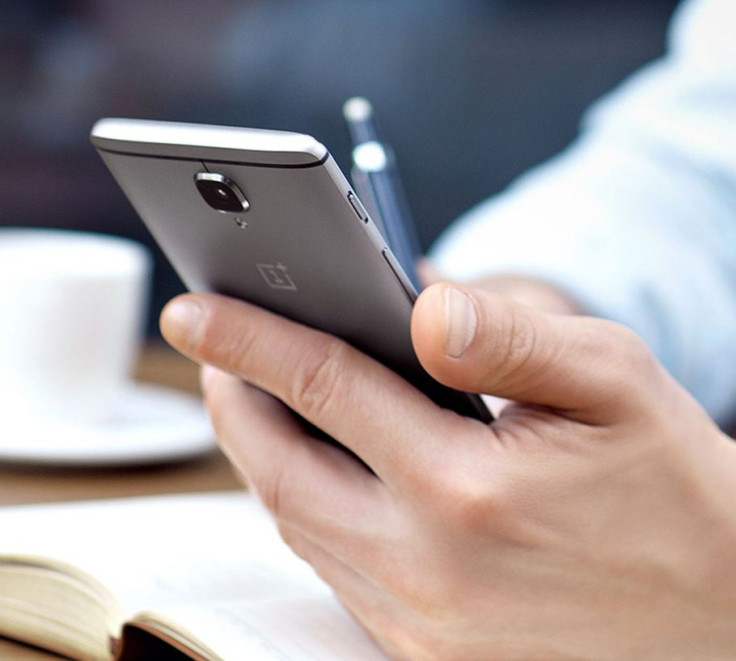Android 7.0 Nougat tips and tricks for OnePlus 3
Check out the tips and tricks for your handset running the latest oxygenOS version.

The upgrade to Android Nougat is finally available for the OnePlus 3 smartphone through the latest OxygenOS version. The new firmware version brings a host of notable changes including new notification design, settings menu design, multi-window view and the ability to reply directly from notification.
IBTimes UK brings a tips and tricks guide for readers to help them take advantage of the new features. The tips have been shared by folks at the OnePlus forum.
Tips and tricks
- In all modes, the volume can't be set to zero or vibrate using the hardware keys. But you can set the phone to silent mode and then tap settings in the popup and enable vibration. The phone will vibrate whenever you receive a notification or call.
- The notification LED turns blue when dash charging, even if you have chosen any other colour under the LED notification setting.
- When you turn on Power Saving mode, the GPS and rotation get disabled. But you can turn them on manually to get the GPS while using the power saving mode.
- The homescreen grid size changes according to the DPI setting. You can get additional grid slots by making display elements smaller.
- To get the last used app, tap the recent button twice.
- The clock widget takes slightly more space as it can display an additional time zone clock under the main clock.
- After the upgrade to Android Nougat, you should see a small X mark right next to the signal strength icon in the notification bar. This means the mobile data is disabled.
- To get the Do-not-disturb rules, go to the widgets from the homescreen, then add a settings shortcut widget, then select Do not disturb. You can now get access to the hidden menu although it does not work currently.
How tos
- To change DPI, head over to Settings>> Display. The setting required to change the size of the elements, element density on screen is called Display Size.
- Go to Display settings and select Screen Calibration if you want to change the screen temperature and sRGB mode.
- For multitasking/ splitscreen mode, hold on to the recent button with an app running on the screen. Pressing the home button while on the splitscreen launches another app from the home screen and go back to splitscreen. To exit the splitscreen, long press the recents button again when two apps are displayed. Alternatively, resize the apps to the full screen.
- To get the details about any running app, tap the recents button, then hold the app's icon; you should see a little I popping up in the app's title bar; tap it to go to the screen from where you can manage the app's data, force stop and do other functions.
- The equaliser can be seen under audio settings. It works with the headphone only.
- To capture screenshots, hold the Power and Volume buttons. Alternatively, enable the gesture for it by going to the appropriate menu.
- For the phone's call blacklist and SMS spam list, launch the apps and tap the three dots menu, then select Spam.
- If you want to filter the phonebook, launch the phone app, then click on the 3 dots menu, select Settings, then the second option. You can accordingly select the accounts to display the contacts and hide the contacts.
- For Easter egg, tap the Android version by going to the phone's settings menu and then tap the N icon for a few minutes. Now go to the dropdown menu and customise it to add the Easter egg.
- To access internal memory from a PC, slide down to the notification menu, tap on the notification and select data transfer.
- To encrypt an app, navigate to security settings and select applocker.
- If you don't like the battery icon and want to change it, go to Settings>> Status bar. The last option in the list allows customising status bar clock.
- To get back an OnePlus stock app, which you deleted, perform a factory reset.
- There is a new feature called File Dash, which can be found in the File Manager app. Open the File Manager and select the icon to the left of the search icon. It can be used to send files through Wi-Fi to other phones.
- To get Data Saver, you will need to add its dropdown menu toggle or go to Settings, Data usage, three dots menu and Data Saver.
- Navigate to Settings>> Apps; you can find the Apps Auto-Launch from the bottom of the list.
- The Aggressive Doze & App hibernation can be found under Settings>> Battery>> 3 dots menu.
- If any app is displaying odd behaviour, try to clear the cache and data. Also try to uninstall and reinstall the app.
- The apps that are not made for Android Marshmallow or Nougat ensure that you have given all the permission, as denying permission for older apps could create a crash.
© Copyright IBTimes 2025. All rights reserved.





















